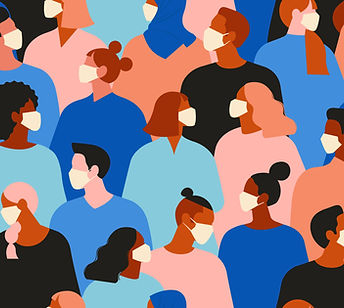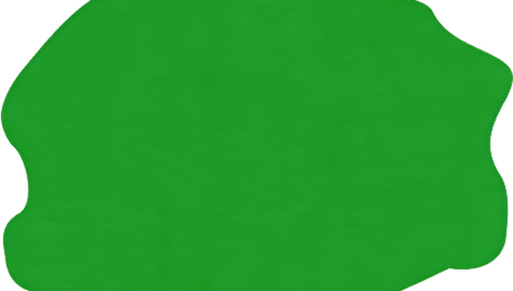Our Research Themes

Social CONNECTIONS with FacE Occlusion
We are experts at using cues from faces to recognize, infer, and share the emotions of others. But what happens when part of the face is hidden from view? Inspired by the Covid-19 pandemic, this work explores how social interactions change when face features are hidden and identifies strategies to restore social functioning under these conditions.
Identifying Perceptual Roots of Bias
Systemic bias across cultures has many causes. This line of work seeks to identify and combat the perceptual roots to bias, including how the perception of ingroup and outgroup faces differs, and how cultural face occlusion (e.g. niqabs) can alter face perception.


Social Cognition in The Digital age
The past decade has seen an unprecedented rise in social media usage. How does our social cognition differ when social interactions are no longer in-person? For example, while photo editing to enhance physical attractiveness is an increasingly common online practice, it is unknown how this process might impact our social perception of the pictured individuals.

ADAPTABILITY oF Social Processes
We are experts at piecing together social clues to inform our interactions. Yet we often learn to interpret the same information differently across individuals and time. For example, how do we learn that a certain mannerism from a friend means they are having a bad day? How do our social perceptions change across time and experience?

Our Published Work
1. #McCrackin, S., #Mayrand, F., & *Wei, C. & Ristic, J. (in press). Filtering reality: Information about picture editing influences social affective judgements of depicted individuals. #Equal contribution. Current Psychology. IF = 2.50
2. Mayrand, F., McCrackin, S., & Ristic, J. (2024). Perceived intentionality in eye gaze facilitates mental state attribution but not gaze following. Nature Communications Psychology, 90(2).
3. McCrackin, S., & Ristic, J. (2024). Beyond the Whole: Reduced empathy for masked emotional faces is not driven by disrupted configural face processing. Behavioral Sciences, 14(9), 850. SPECIAL ISSUE: Recent Advances in Understanding Facial Expression Processing: New Methods, Measures and Models. IF = 2.50
4. McCrackin, S., & Ristic, J. (2024) Lower empathy for face mask wearers is not explained by observer’s reduced facial mimicry. PloS one, 19(9), e0310168. IF = 2.90
5. McCrackin, S., & Ristic, J. (2024). Improving masked communication: the case for transparent masks. Frontiers in Communication, 9, 1371142. IF = 1.50
6. McCrackin, S., *#Provencher, S., *#Mendell, E, & Ristic, J. (2023). Decoding the silent language of the eyes: Occluding the eye-region impacts understanding and sharing of emotions with others. #Equal contribution. Social Cognition, 41(4), 365-389. IF = 1.82
7. McCrackin, S., & Ristic, J. (2022). Emotional context can reduce the negative impact of face masks on inferring emotions. Frontiers in Psychology, 13, 928524. IF = 2.99
8. McCrackin, S., *#Provencher, S., *#Mendell, E, & Ristic, J. (2022). Transparent masks mitigate the negative impact of opaque masks on understanding emotional states, but not on sharing them. #Equal contribution. Cognitive Research: Principles and Implications, SPECIAL ISSUE: Face coverings: Considering the implications for face perception and speech communication. 7(1), 59. IF = 3.70
.
9. McCrackin, S., Capozzi, F., Mayrand, F., & Ristic, J. (2022). Face masks impair basic emotion recognition: Group effects and individual variability. Social Psychology. SPECIAL ISSUE: Understanding others in Moments of Crisis. 54(1–2), 4–15. IF = 2.71
10. Hudson, A., Durston, A. J., McCrackin, S., & Itier, R. J. (2021). Emotion, Gender and Gaze Discrimination Tasks do not Differentially Impact the Neural Processing of Angry or Happy Facial Expressions—a Mass Univariate ERP Analysis. Brain Topography, 34(6), 813-833. IF = 3.02
11. McCrackin, S., & Itier, R. (2021). I can see it in your eyes: Perceived gaze direction impacts ERP and behavioural measures of affective theory of mind. Cortex, 143, 205-222. IF = 4.03
12. *Chen, Z., McCrackin, S., *Morgan, A., Itier, R. (2021). The gaze cueing effect and its enhancement by facial expressions are impacted by task demands: direct comparison of target localization and discrimination tasks. Frontiers in Psychology, 12, 696. IF = 2.99
13. McCrackin, S., & Itier, R. (2020). Feeling through another’s eyes: Perceived gaze direction impacts ERP and behavioral measures of positive and negative affective empathy. NeuroImage, 226, 117605. IF = 6.56
14. McCrackin, S., Lee, C. M., Itier, R. J., & Fernandes, M. A. (2020). Meaningful faces: Self-relevance of semantic context in an initial social encounter improves later face recognition. Psychonomic Bulletin & Review, 1-9. IF = 5.54
15. McCrackin, S., & Itier, R. (2019). Perceived gaze direction differentially affects discrimination of facial emotion, attention and gender – an ERP study. Frontiers in Neuroscience, 13, 517. IF = 4.50
16. McCrackin, S., *Soomal, K. S., *Payal, P., & Itier, R.J. (2019). Spontaneous eye-movements in neutral and emotional gaze-cuing: An eye-tracking investigation. Heliyon, 5(4), e01583. IF = 2.85
17. McCrackin, S., & Itier, R. (2019). Individual differences in the emotional modulation of gaze-cuing. Cognition and Emotion, 1-33. IF = 2.68
18. McCrackin, S., & Itier, R. (2018). Is it about me? Time-course of self-relevance and valence effects on the perception of neutral faces with direct and averted gaze. Biological Psychology, 135, 47-64. IF = 3.25
19. McCrackin, S., & Itier, R. (2018). Both fearful and happy expressions interact with gaze direction by 200ms SOA to speed attention orienting. Visual Cognition, 1-22. IF = 1.88
Thank you to our funders.


.png)